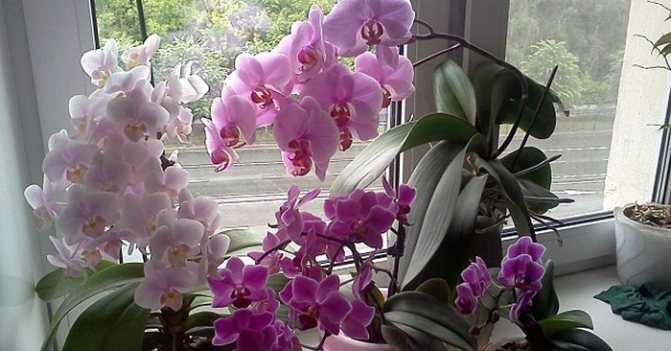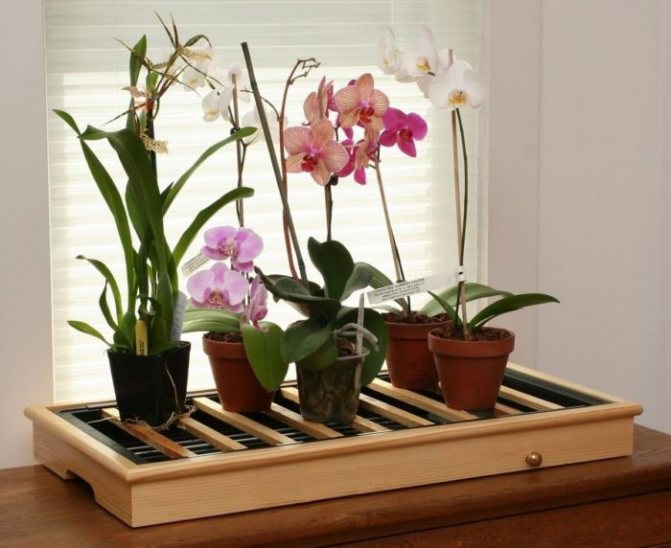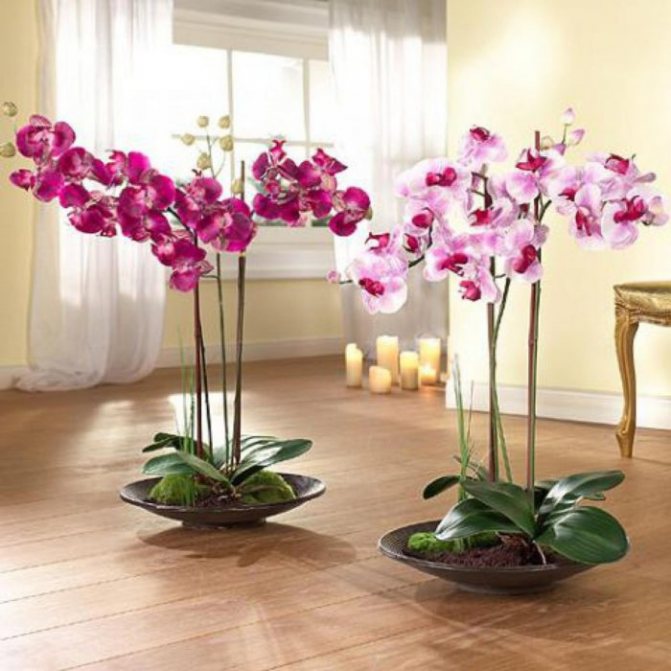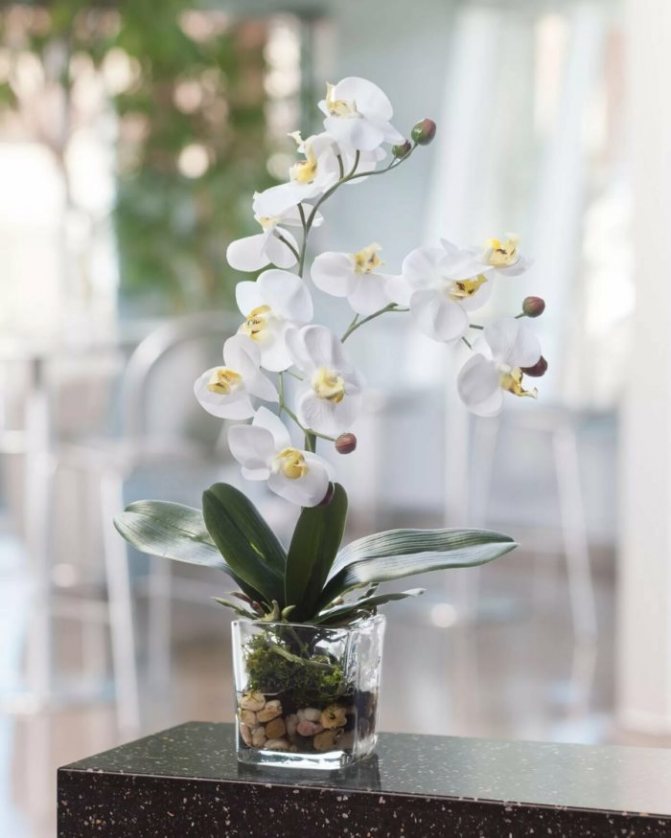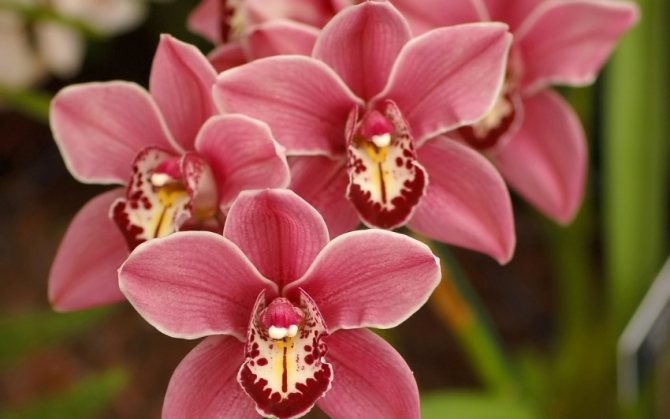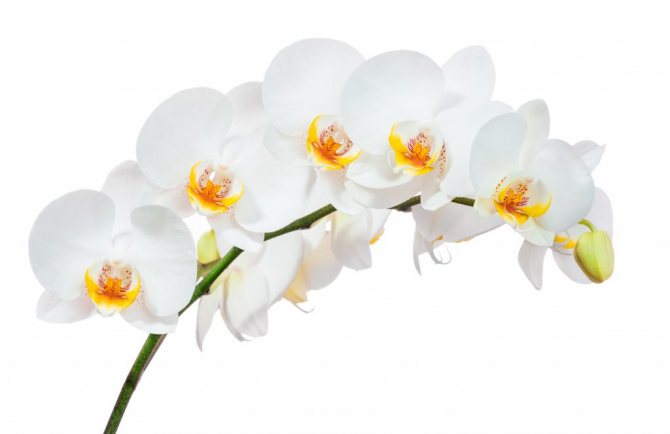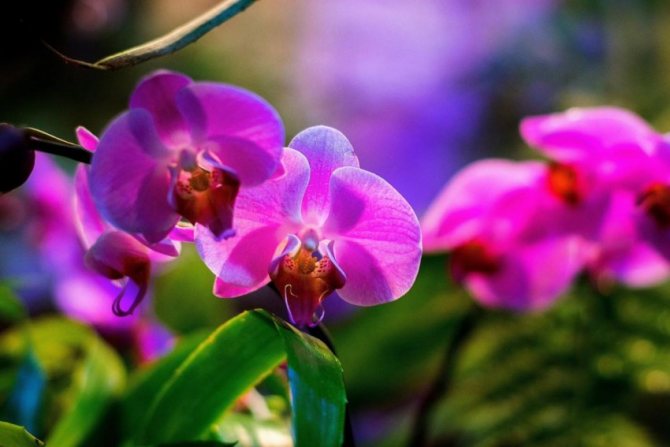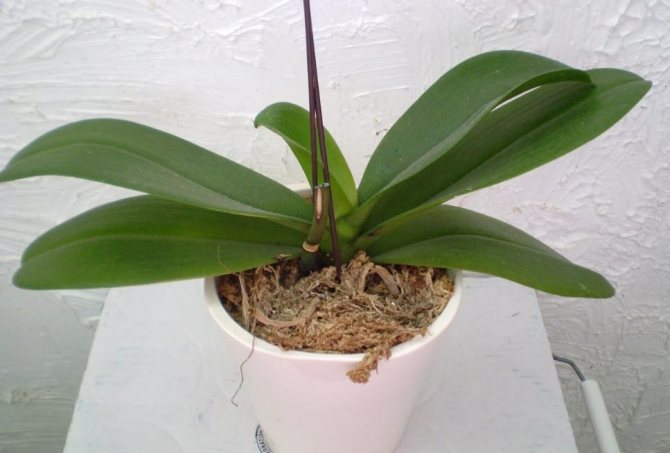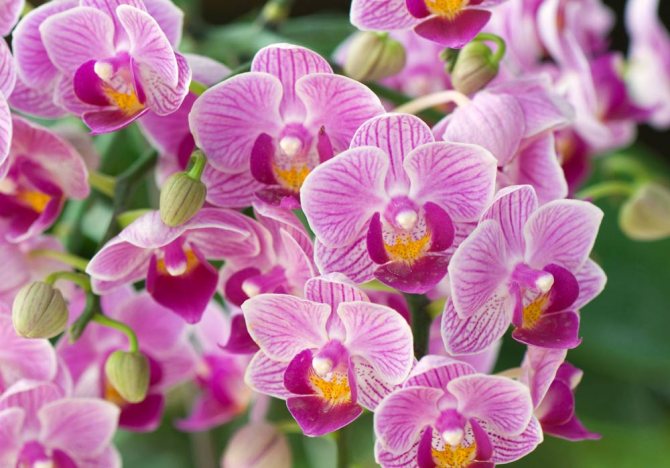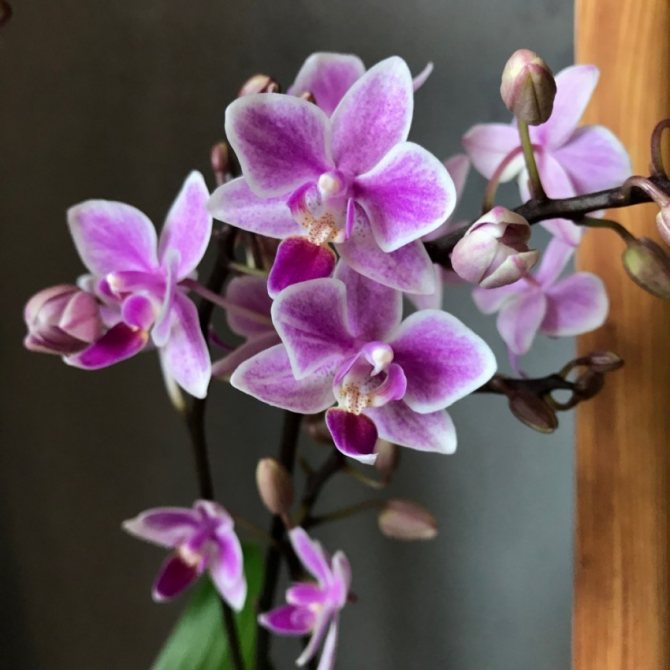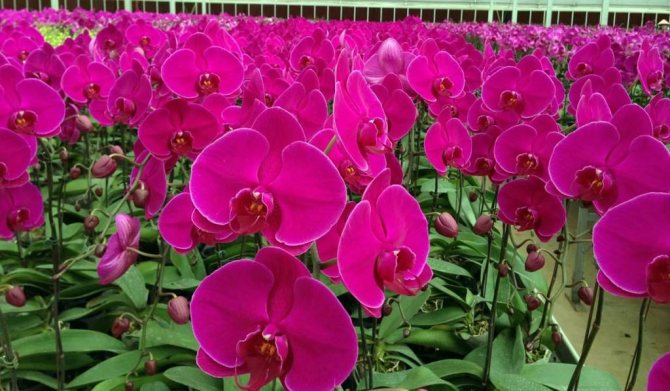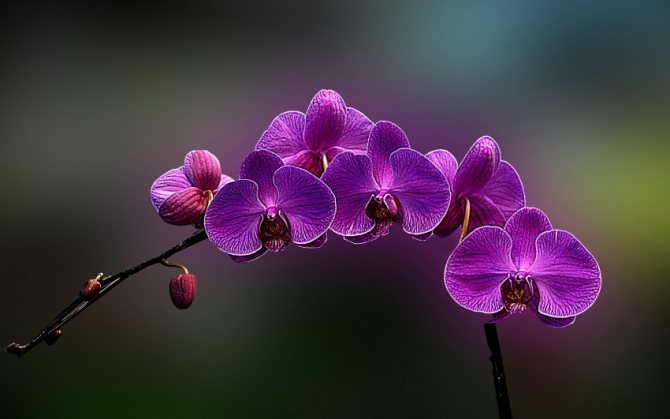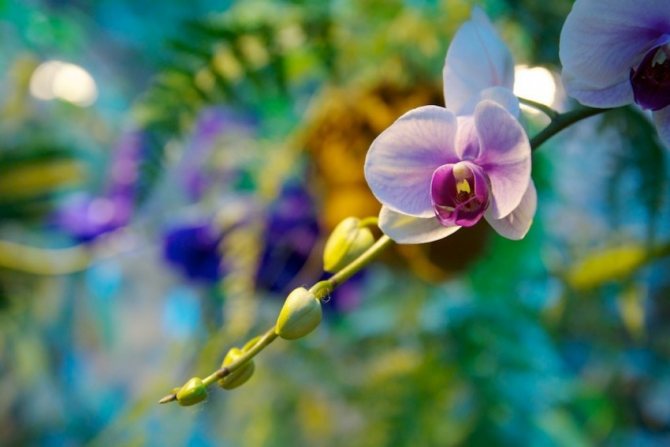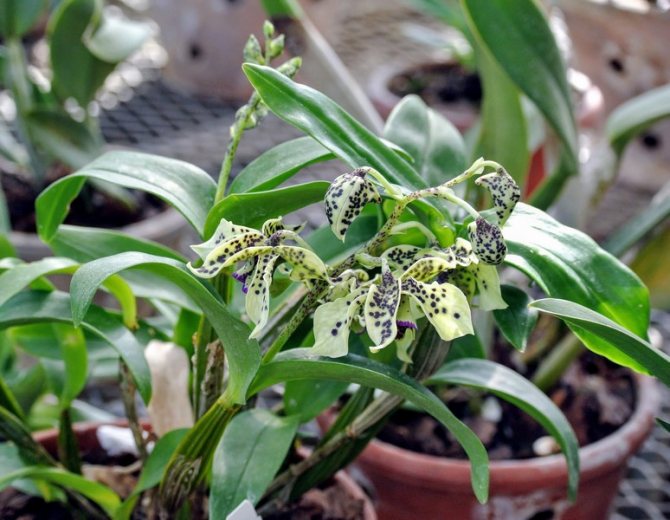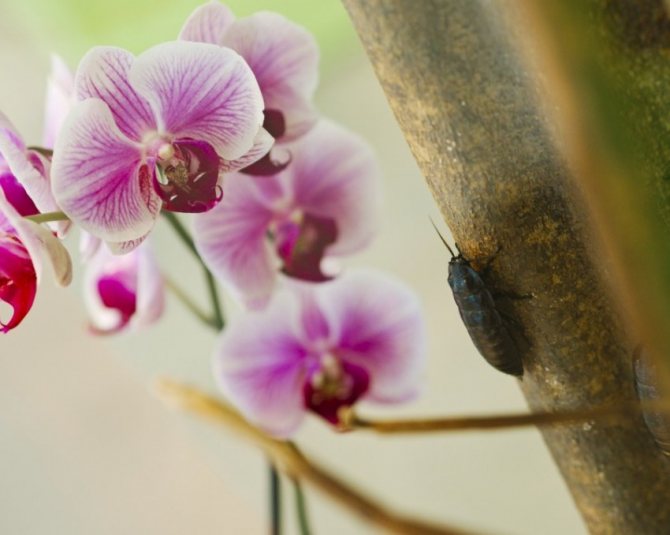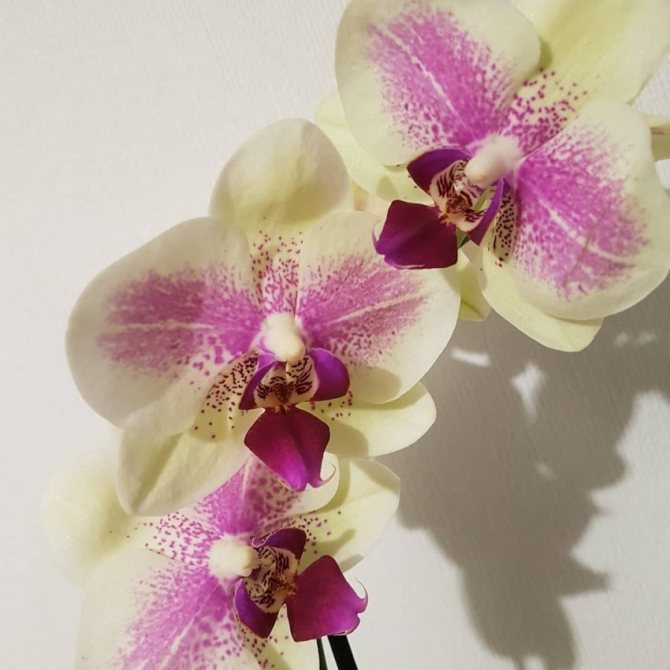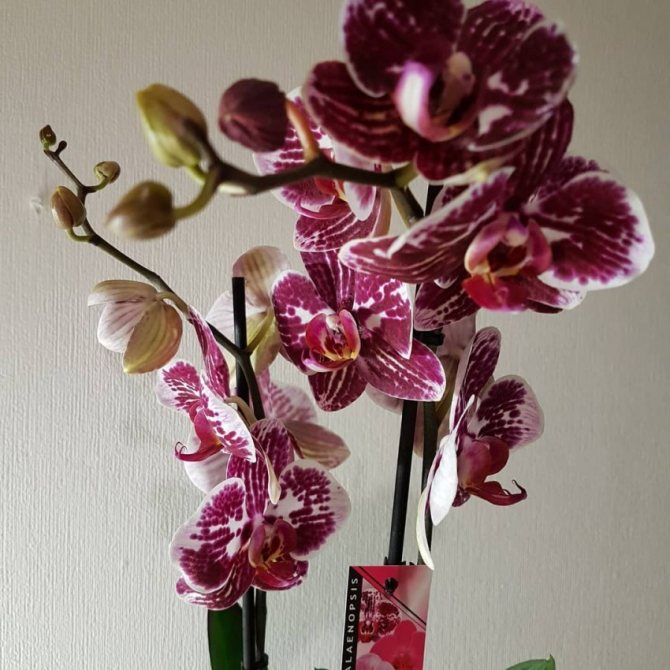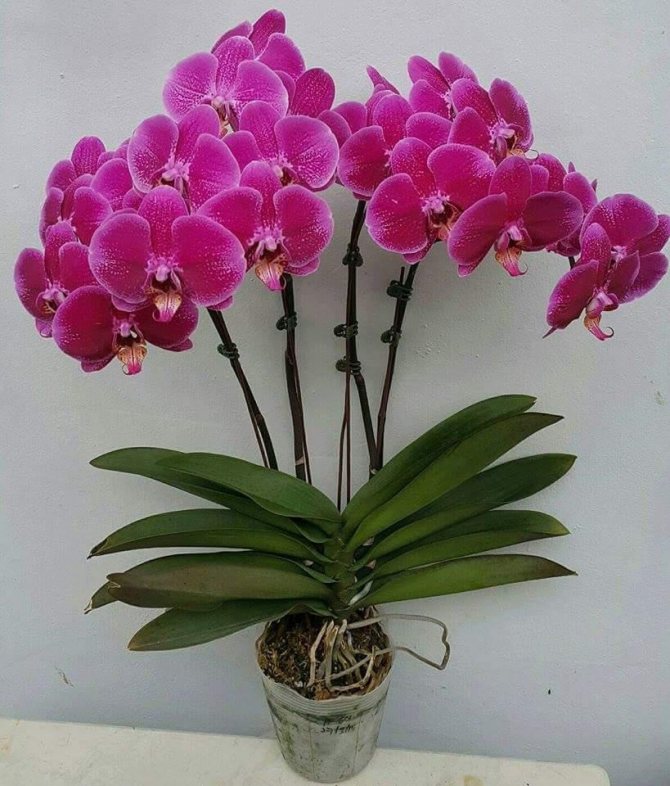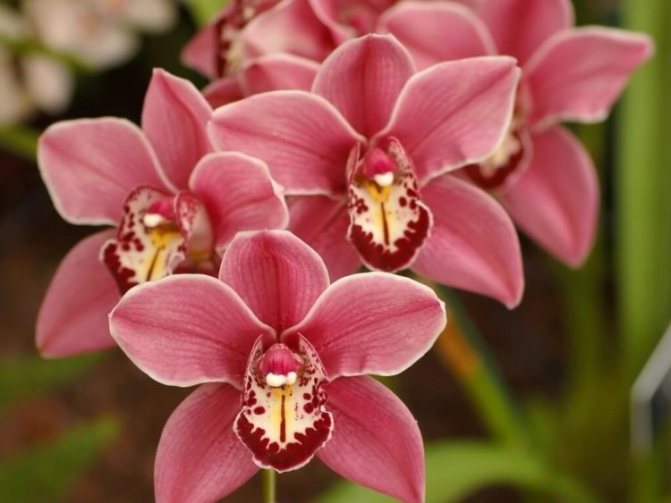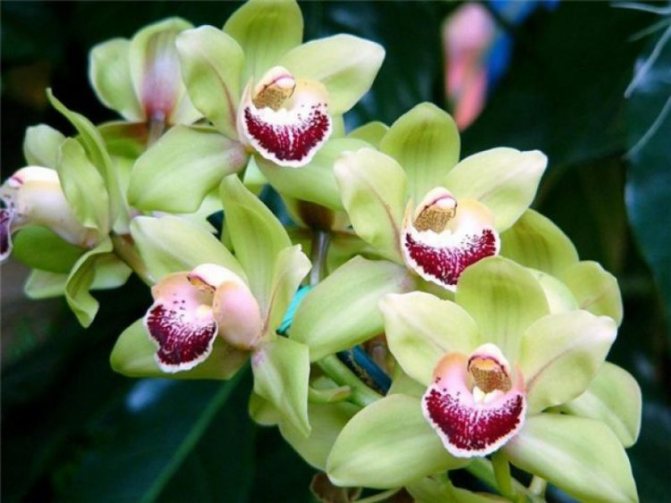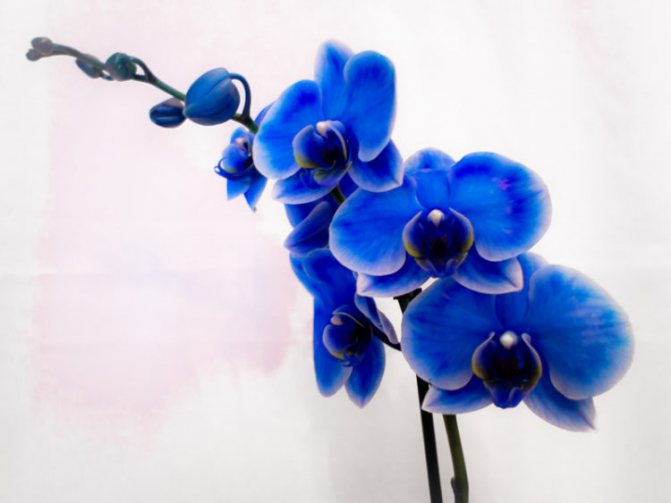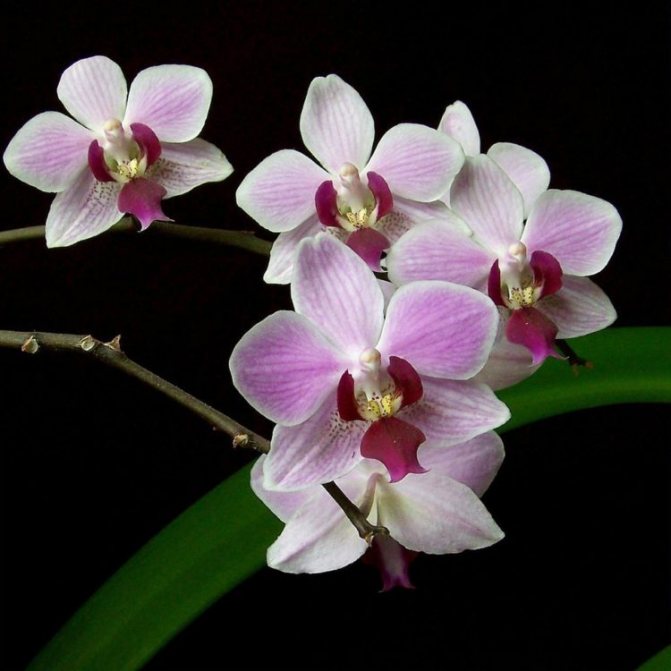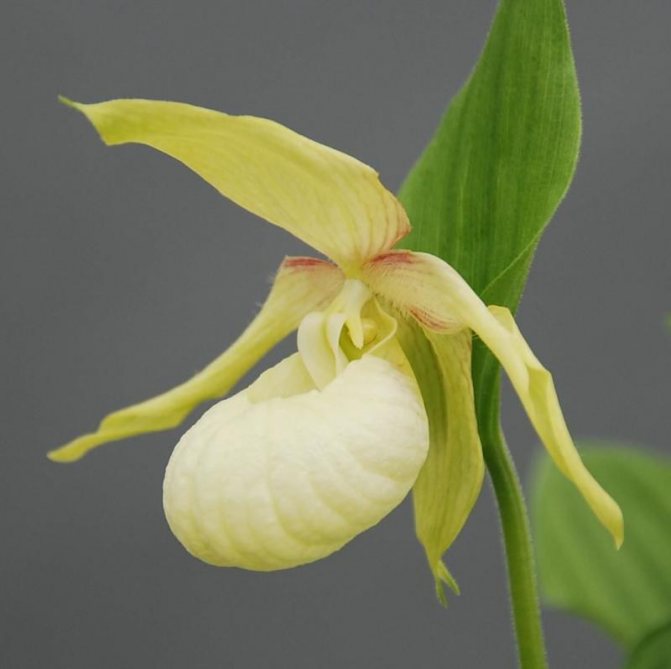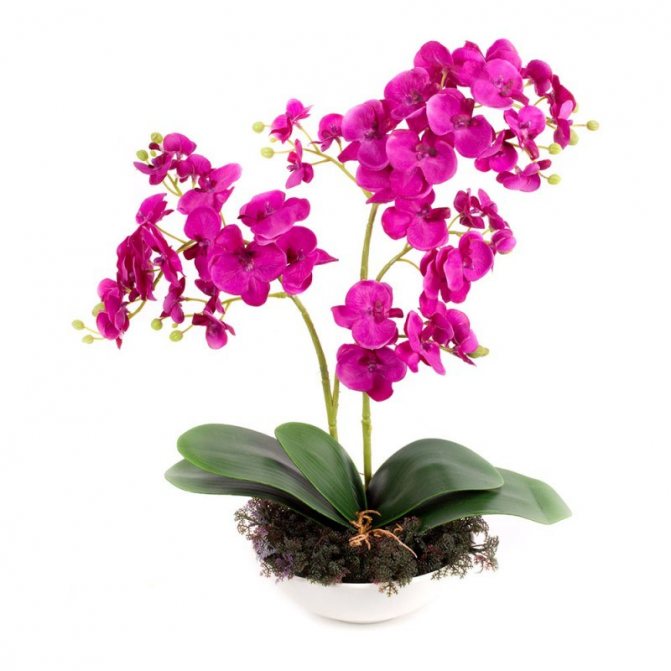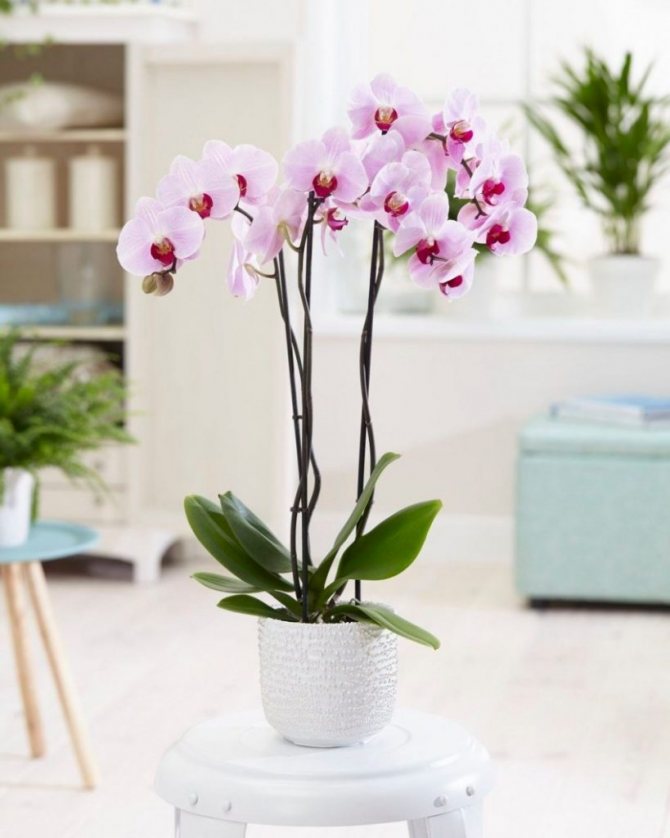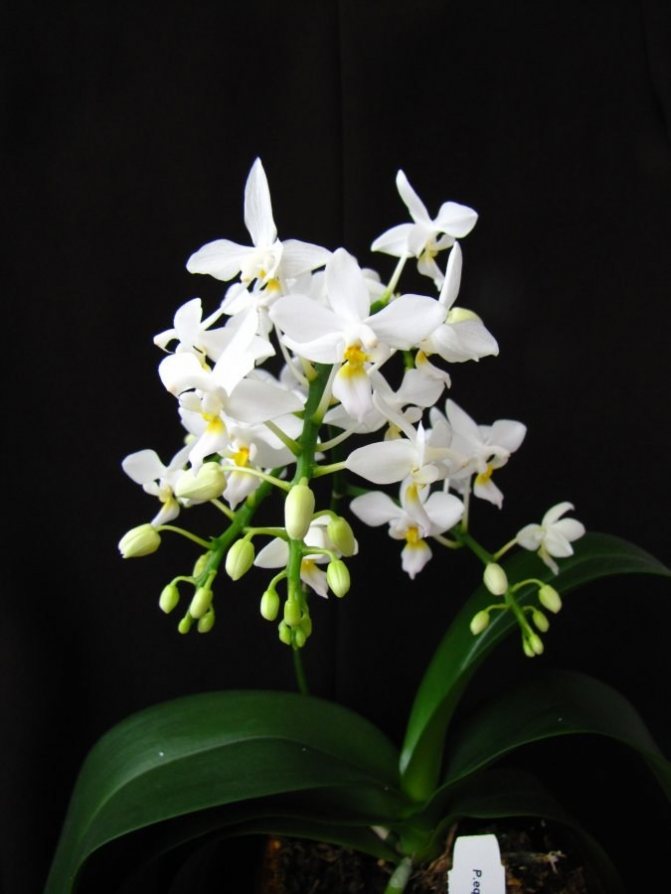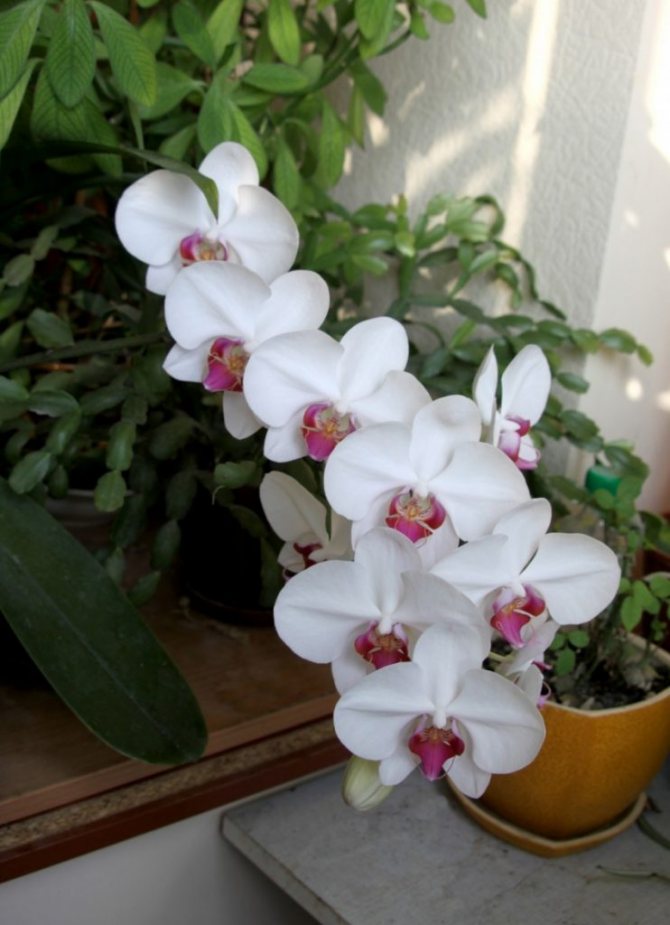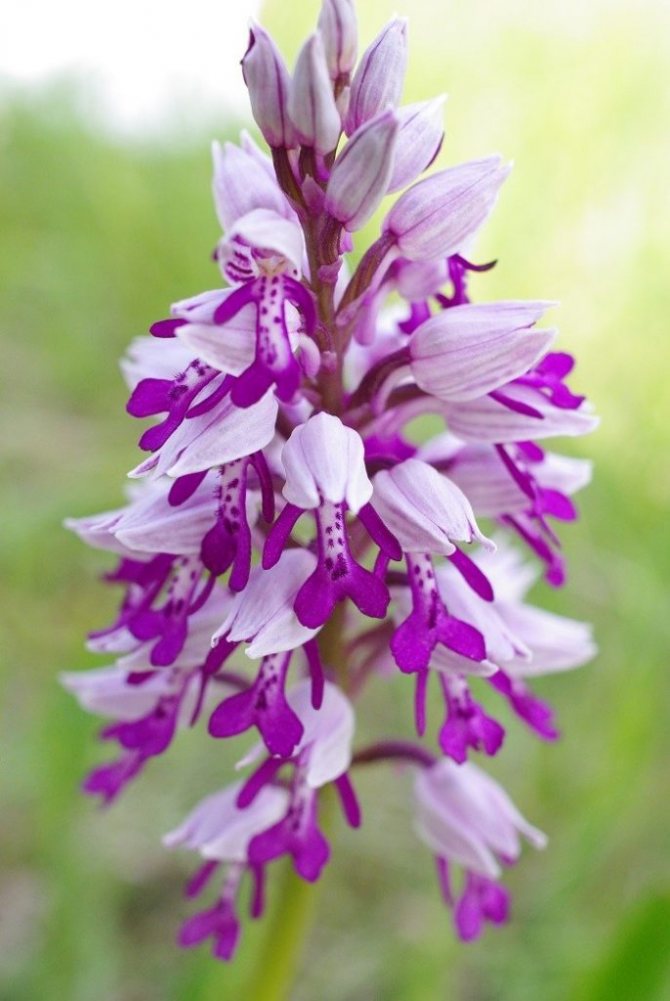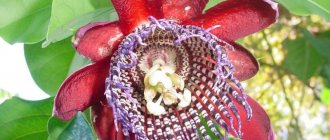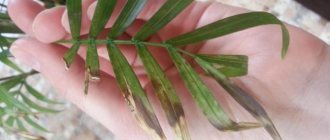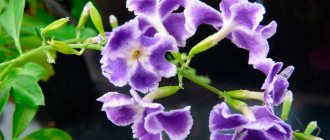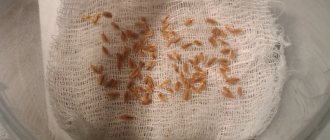Growing orchids - a whole art. After all, this process is very unusual and quite different from the banal care of other indoor plants.
Watering the flower is recommended infrequently, instead of soil use substrates from pine bark, coal, sphagnum moss.
And instead of a plant
pleases with beautiful flowers... Improper care and the slightest departure from the advice of specialists can lead to certain death.

In order for an orchid to bloom, it must be carefully looked after.
In order for orchids, without ceasing, to please with rapid flowering, it is worthwhile to clearly understand what the plant needs at certain times... All this can be easily determined:
- By the appearance of the flower;
- By shoots;
- And the roots.
Important! Creation of comfortable conditions and meticulous care of the plant are the key to lush flowering. Favorable conditions, proper care and useful elements are the basis of the health and strength of the flower.
Correct lighting
Proper care of an orchid begins with choosing the right place. Lighting there should be abundant, but diffused: the direct rays of the sun should not fall on the flower. In summer, especially in sunny weather, it can even be slightly shaded with a matte film or translucent plastic. This is especially important in the spring, when the plant is just beginning to rebuild after short winter days.
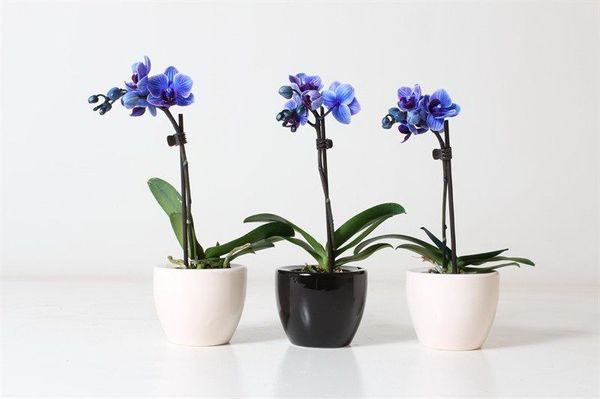

But the soft autumn sun will not harm, but on the contrary, will give the plant the strength to prepare for winter. Shading can be removed at this time. In order for phalaenopsis at home to bloom profusely and for a long time, daylight hours should be at least 12 hours.
During the cold period of the year, you should take care of artificial lighting. Fluorescent or phytolamps are a good choice. The backlight is especially important if the plant has thrown out a peduncle: by directing the main light of the lamps to it, you can make the home orchid bloom in winter.
In this case, the place should be constant - frequent rearrangements, even small movements of the pot will become stress for the orchid and the period of its flowering may be reduced. A place near the south or southeast windows is well suited.
The main periods of peduncle formation
During flowering, the orchid is incredibly beautiful. Most often, the flower is bought during this period.
Experienced flower growers, whose windowsills have seen far from one plant, will make every effort from the first days to make the flower pleasing to the eyes for as long as possible and bloom as often as possible.
An orchid bloom is a real magic. Large inflorescences are most often found at the base of the peduncle, and their number can be up to 80 pieces. Attractive to orchid lovers is the fact that the color palette of blossoming buds is very diverse, everyone can choose a color scheme to their liking.
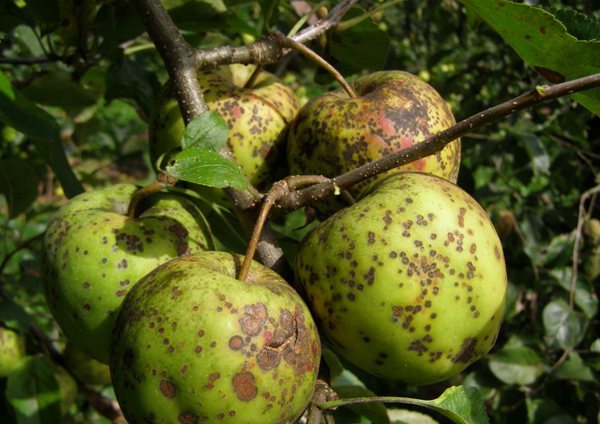

The orchid begins to release a peduncle.
The flowering period begins just with the emergence and opening of buds. This process is quite lengthy: first of all, the side and upper petals open, then the lip opens and only after a day has passed the flower opens fully... The active growth of the orchid lasts for several more days, and, in the end, you can contemplate the finally ripe flowers.
Experienced growers never tire of repeating that after the appearance of the first buds, it is imperative to take care of the reliable support of the peduncle.
It is recommended to install supports at the very beginning of flowering, because under the weight of a large number of inflorescences, the peduncle may not withstand the load. Even improvised means will do.
Temperature regime
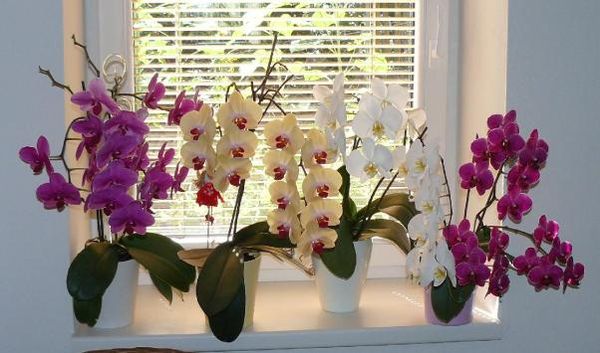

Different types of orchids are preferred at different temperatures. For thermophilic phalaenopsis and Cattleya, the range of 15–32 ° C is suitable in summer, 15–18 ° C in winter. An important rule: daily temperature drops for them should be no more than 3-5 ° C.
But dendrobiums, laelias, Venus shoes, miltonia and odontoglossums are more fond of relative coolness. For them, it is desirable that the maximum temperature in the summer in the house does not exceed 22 ° C, and in winter it is kept at the level of 12-15 ° C.
It is advisable that during the flowering period of orchids the temperature is maintained that is optimal for a given variety. Moreover, if you want to enjoy a luxurious flowering, you need a difference between day and night temperatures of several degrees - it stimulates the setting of buds. However, such changes should not be sharp, otherwise the plant may get sick.
Helpful hints
- Do not be lazy to find out the type and variety of the plant... This will help ensure the most favorable conditions for growth and development;
- Moisture oversaturation Is a common problem. In order not to expose the roots to decay and reduce the risk of kidney death, it is worth paying special attention to watering;
- Don't forget about the south side of the window... This little trick will help increase daylight hours. It will also provide the plant with a natural temperature drop.
Regularity of watering
To take good care of an orchid, you need to follow the watering rules. When and how to water these flowers?
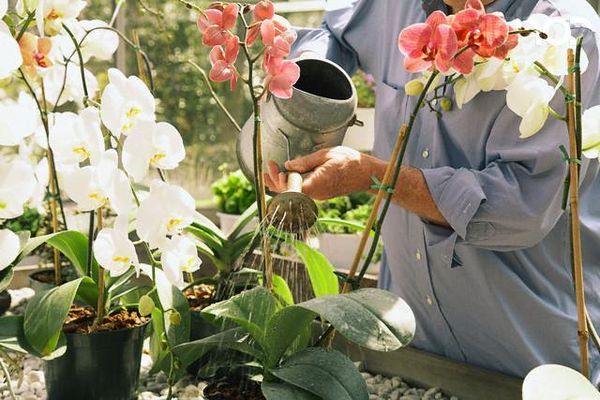

Moisture requirements vary from species to species, as do temperature requirements. Those who care for phalaenopsis know that these are plants, like Venus's shoes, prefer slightly moist soil; but dendrobiums and oncidiums need watering only after the soil has completely dried out. It is advisable to water the Phalaenopsis orchid especially often when it blooms or throws out peduncles, but it is important that the water does not stagnate - this can slow down the development of buds and even lead to decay of the roots.
In the question of how to water a flowering plant, you need to pay attention to the fact that the water is at room temperature and at the same time sufficiently soft. If conditions and ecology permit, you can use melt or rainwater, if not, you need to boil it or freeze it yourself at least once before watering.
You can determine what home orchids want to "drink" by the roots: when they dry, they acquire a light gray tint, which means the flower needs watering. If the roots are green, then they are still wet. On average, 3-4 waterings per week will be needed in summer, 1-2 in winter.
In caring for orchids, two types of watering are allowed: the traditional upper one from a watering can or shower, so that the water will water the soil from above (after that, it is imperative to drain the leaked liquid from the pan), or the lower one, when the phalaenopsis pot is placed in a container with warm water for about 10 minutes ...


It is possible to determine that the plant is suffering from insufficient watering by the wrinkled pseudobulb.
Flowering periods of the three most common varieties
Cymbidium
The most popular type of orchid, which increasingly takes a comfortable place in the homes of lovers of beauty. These instances unpretentious in care, therefore, are in great demand.
The flowering time of Cymbidium falls on the period from October to Februaryas well as, with proper care, from July to October.


Cymbidium.
Phalaenopsis
The best option for those who are just mastering floriculture. Phalaenopsis does not require scrupulous care. And this species won the love of millions by the fact that able to bloom all year round.
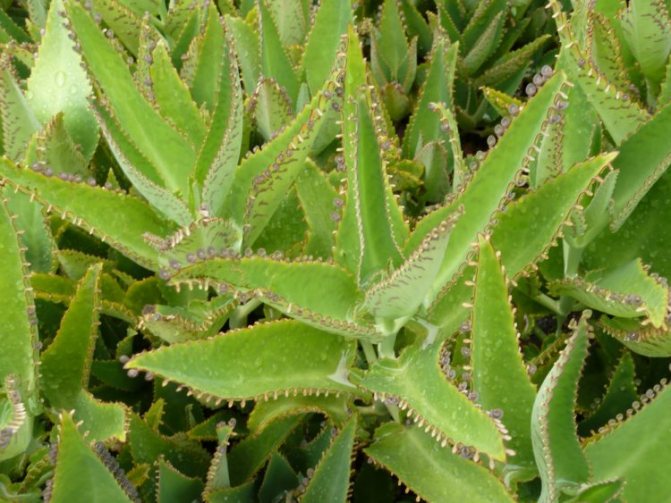

Phalaenopsis.
Dendrobium
Dendrobium - one of the tallest orchids, long ago settled in houses as a houseplant. The main flowering time falls on the period from October to January.
With proper care bloom is possible from July to September.
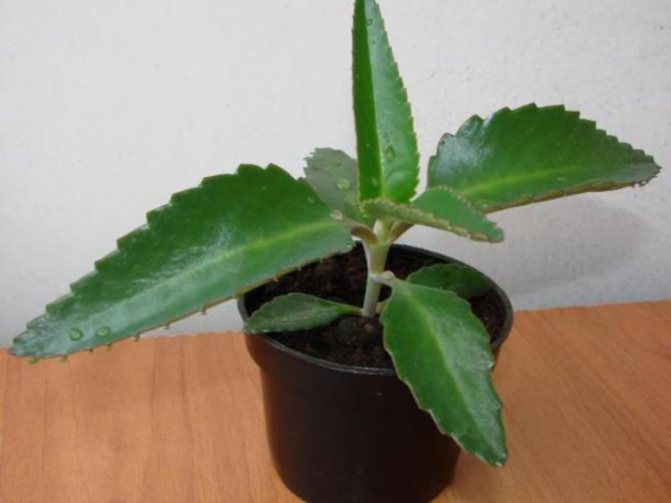

Dendrobium.
Air humidity
To properly care for a blooming orchid at home, it is important to maintain normal air humidity. Usually, indoor conditions are enough for flowering orchids: the permissible indicator can range from 40 to 70 percent. But if it falls below, the flowers may begin to fall off, and the plant itself will stop growing. This is possible both in summer in the heat and in winter, when the batteries dry out the air. In this case, it is better to use a humidifier, put wetted expanded clay or just an open container with water next to the flowers.
For some species, it is allowed to spray the leaves from a spray bottle, it is only important that water does not get into the leaf axils - it will stagnate there and cause the plant to rot. It is best to get maximum moisture to the bottom of the leaf, where the stomata are located, which absorb water. It is necessary to spray the orchid during the day, with good, but in no case direct lighting, otherwise a severe burn of the plant is possible.
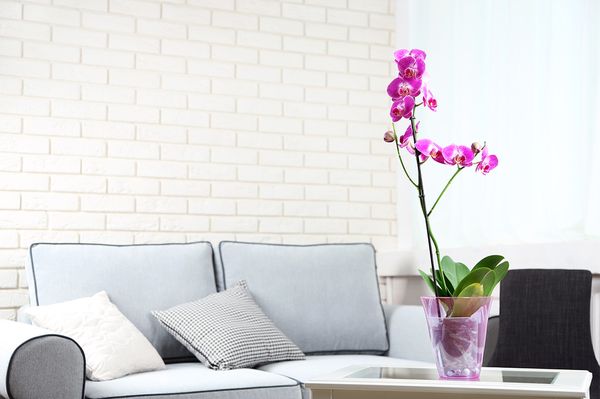

With high air humidity, whether natural or artificial, you need to often ventilate the room, otherwise the plant can infect the fungus.
How to stimulate flowering


These tips will help you get your orchid to bloom more often, more abundantly, and more regularly:
- Do not move the pot unless absolutely necessary - orchids are extremely sensitive to changing their location. If the plant still needs to be rearranged, place it with the same side to the light source as before.
- Keep your roots healthy. The condition of this part of the orchid is very important, because its roots not only receive nutrients from the soil, but also accumulate them in themselves and participate in photosynthesis.
- Provide enough light. An orchid blooms if the daylight hours are at least 10-12 hours. Of course, there is less natural light in winter. The lack of illumination must be compensated artificially.
- Please note: ordinary lamps dry out the air, which the orchid does not like very much. Therefore, it is better to purchase special phytolamps.
- Provide a temperature difference between night and day in the range of 4-6 диапазонеC - this will serve as a real catalyst for flowering. In the summer, orchid pots can be put outside where this temperature difference will naturally occur. For the rest of the year, provide regular, draft-free ventilation.
- Increase watering shortly before and during flowering. But do not flood the orchid, otherwise the roots will start to rot and it may die. After finishing it, be sure to reduce watering - this is important for seed ripening and subsequent flowering cycles.
- Provide high humidity. Dry air next to the orchid leads to the fact that it does not bloom at all, or the peduncle dries up prematurely without blooming. Air humidification methods: spray the plant with a spray bottle, install an automatic device of the same action, or place containers with water next to it.
- Feed your orchid with phosphate-potassium fertilizers. And you should refrain from nitrogen compositions in the period until the end of flowering, because they slow down this process.
- Set aside a rest period of about a month after each flowering. At this time, try not to rearrange the orchid, not to transplant it, in general, to maintain the same conditions for its maintenance.
If all the conditions are created, and the orchid still does not bloom, carefully "shock" it. Move to a slightly cooler place for a short time and water a little less often.Also, from time to time, you can use special flowering stimulants. But don't get carried away, using them too often can deplete and destroy the plant.
Please note: you can "shock" the orchid only before the flower stalk is laid. During the period of its formation, the conditions of its detention should be as comfortable and constant as possible.
Pot and soil requirements
Important conditions for caring for the Phalaenopsis orchid are a translucent pot and special soil. The pot must transmit light, since in orchids, not only the leaves, but also the roots are involved in photosynthesis. In addition, if the pot is not smooth, plastic, but rough (for example, ceramic), the roots can grow to it, which injures them during transplantation.
Substrate for orchids can be purchased specialized or made independently from sphagnum moss and bark of conifers. For mature plants (over three years old), clean bark is also perfect.
Pot immobility
It is a well-known fact that orchids do not tolerate moving very well. However, this plant reacts painfully even to minor movements. In this case, its position in relation to the light source plays an important role. For this reason, when it is necessary to rearrange a container with an orchid, it should be placed on the same side to it as it was previously. Also, do not move the orchid while watering. A change in position negatively affects the growth of the flower, especially at the time of the formation of the peduncle.
Plant transplant
A newly purchased plant needs immediate replanting only if the supplier has used pure sphagnum as soil. If the substrate properly includes bark, you don't have to disturb the orchid or increase its stress.


On average, a new transplant for a home orchid will take one and a half to two years, depending on the species, or in the case when the roots are clearly cramped.
It is advisable to transplant these plants after flowering. After transplanting, the substrate should never be tamped down - this can severely damage the roots, moreover, they need air. After transplanting, the orchid should not be watered for five days (during this time, wounds will heal on the roots).
What is important to know about orchid bloom
Orchids, including the phalaenopsis species, are found all over the world, and in the wild they can survive in almost any conditions. Since this variety belongs to epiphytes, then these flowers are able to be held by the roots for other plants, covering them from the scorching sultry rays of the sun, from heavy rains and even from drafts. In all this diversity, orchids have their own life cycle.
Orchids are born sexually: during flowering, insects pollinate the plants, resulting in a capsule containing millions of small dusty seeds. It ripens within 8-9 months, after which it bursts, and the wind carries them hundreds of kilometers.


In this context, the phalaenopsis bloom plays the most important role in the life of the plant. Domesticated hybrids are rather difficult to reproduce by seeds, but they are very willing to give children. After the last flower has been dried and discarded, the plant may dry out the peduncle as well. But if good conditions are observed, a baby may appear on the peduncle, which after 9-12 months will grow leaves, small roots and it can be planted.
Fertilization and feeding
In such a matter of how to care for orchids, the question of feeding is rather controversial. Some experts are sure that the plant can get all the necessary nutrients from the substrate, you just need to change it at least once every two years. Others believe that fertilizers are important for flowering plants, especially phosphorus and potassium.
In any case, top dressing is recommended only when, when the plants are actively developing and blooming, and this should be done no more often than once every 2-3 weeks. At the same time, a special rule for caring for orchids is that about a week after fertilization, the soil must be rinsed in order to remove unabsorbed mineral salts from it. This can be done with a shower. When the water begins to drain into the pan, pour it out and place the pot on a wire rack to dry.
If the orchid has faded and the peduncle begins to dry out, it should be removed - this will help the new develop. If it remains green, you should not cut it off - the buds can form on it one more time.
Can orchid flowers be cut?


The short answer is yes you can. This does not harm the plant if you cut off the peduncle with a sharp knife or scissors, and do not roughly break it off. But keep in mind that only phalaenopsis, cymbidiums and pafiopedilums can stand in a vase for a long time. Other orchid varieties wither after being cut in a matter of hours.
Important: flowers can appear on one peduncle up to 2-3 times. After that, it is advisable to cut it off - this way the plant will form new ones easier and faster.
Photo
Below you will see the plant in bloom in the photo:
The timing of budding


Usually an orchid blooms for a long time. This period can last from three months to six months. For example, there are varieties in which the first flowers appear in mid-summer, and the last in March.
But how many times a year does an orchid bloom? As a rule, most plants bloom at least twice, and some of them bloom three times. In a word, the characteristics of the variety should be taken into account, and in the absence of buds, try to stimulate this process by various methods.
The orchid has released a peduncle, but does not bloom. How to make an orchid bloom: the most effective techniques
In tropical rainforests, orchids grow under dense foliage, for them there is no concept of changing the seasons. Phalaenopsis is the most unpretentious species. It can bloom continuously for 11 months. But it is not always possible to achieve such a result at home. If a favorable climate is created, but the orchid does not bloom for 2 years, you can use some effective methods for forcing the peduncle.
- A sharp drop in temperature. During the day, the plant should be in a warm room, and at night you can open a window or balcony to lower the temperature to 16 - 18 ° C. In the summer, a garden is perfect for this. The result is the acceleration of photosynthesis and the accumulation of carbon dioxide, which is used for flowering.
- Creation of conditions for an arid desert. It is necessary to increase the intervals between waterings. In summer it can be 4 days, in winter up to a week. The roots of the plant must be dry. If this method is applied correctly, the lower leaves will soften slightly.
- Hot shower. Before starting the procedure, the bathroom is filled with steam, turning on boiling water. The plant is placed in a bath and poured over with warm water at a temperature of about 35 ° C for 15 minutes. At this point, there is an abundant absorption of moisture through the roots and an intense release through the leaves. After about a week, the orchid should release flower stalks.
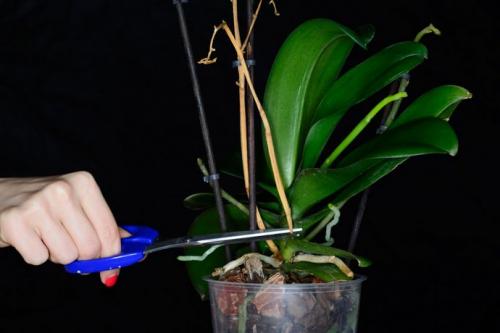

- Improved lighting. Different types of orchids require different light intensities. If the plant is not blooming, there may be insufficient light. It is required to rearrange the pot to a more illuminated place or purchase a special fluorescent lamp.
- Peduncle pruning. Each peduncle contains several buds that are dormant. To achieve flowering, the arrow is cut off approximately above the third bud.
- Transfer. The lack of flowering can be caused by soil depletion. This is noticeable in the leaves of the orchid. If the growing leaves are smaller in size than the old ones, or are deformed, then the plant must be transplanted into a new soil.
Some types of orchids release a peduncle only after reaching the age of three.If the plant has 5 - 8 shoots, then it is mature enough and ready for flowering. Only healthy orchids can be made to bloom. Weakened and diseased plants should gain strength to release the flower branch.
The problem of the transition of phalaenopsis from store to home flowering
The first problems with flowering phalaenopsis arise shortly after purchase. They can be classified as follows:
| Problem | Cause |
| Orchid drops buds and flowers | Adaptation of the plant to new conditions of light, temperature and humidity. |
| After the end of the store bloom, the orchid gives a very meager next wave or stops blooming altogether. | Flowering hyperstimulation when grown on an orchid farm |
The first problem is fairly easy to deal with. There is no need to take any special action. It is enough to leave the plant alone and let it adapt.
Individual approach
There are many varieties of orchids. Each of them has its own characteristics. Therefore, there are no general rules, the observance of which guarantees lush flowering. Each variety requires an individual approach. For example, some varieties are sensitive to temperature extremes. To speed up their flowering, you need to keep them warm for some time, and then in the cold. Others begin to bloom after they experience a slight drought. To find out exactly what conditions are required for a particular orchid variety for flowering, you should read the specialized literature.
Why don't orchids grow?


Orchids, in fact, are not much different from other plants - they have roots, leaves, bloom, etc. Accordingly, the reasons why orchids grow poorly are usually the same:
- inappropriate growth conditions or care errors;
- diseases or pests;
- hunger, lack of food;
- injury and damage.
Care errors
An orchid will not grow normally if you do not provide it with enough light, and in general, if you do not provide the proper conditions. This is not because they are so capricious, but because they have their own characteristics that must be taken into account before purchasing a plant.
However, even if the conditions are ideal, but you do not support them (take care of them incorrectly), the plant will also feel bad and, as a result, will not grow. Therefore, do not buy or take a plant for yourself if you are not sure that you can provide the care and conditions it needs. Be responsible and objective.
Root system damage
Filling or overdrying a plant often ends up with rotten or dry roots. In both cases, the orchid will not grow without roots. You can, of course, reanimate, but it is much easier to prevent this from happening.
If you look at an orchid seedling that has hatched, you can see that the root is often larger than the top (leaves) of the plant. This underlines the importance of the roots and the fact that the health of the orchid's root system is the key to the well-being of the entire plant.


Root health is essential for orchids.
Lack of micronutrients
In nature, orchids receive food from the air, precipitation, and less often from the soil. In a pot culture, they are grown on pine bark, and sometimes without any substrate at all. It follows that if you yourself do not take care of feeding the orchid, it will simply have nowhere to take the trace elements necessary for life and development.
Decay, damage, lack of growth point
Obviously, since there is no growth point, then the plant simply cannot grow anymore, it will grow old and soon die. But before this happens, the orchid usually manages to give one or more shoots, that is, to reproduce itself.
Important! Often on the forums you can find a photo of a seedy orchid with a couple of leaves and dead roots, and underneath the heated exclamations of the owner, they say, "how can I make it bloom?" No way! Take good care of it and the plant will bloom on its own.
What if the plant does not bloom, but grows green mass?
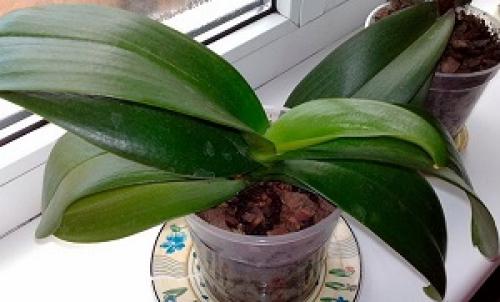

Often, flower growers are interested in why flowers do not grow. There is nothing wrong. The plant thus reacts to the surrounding conditions, as a rule, to the absence of fluctuations in night-day temperatures.
For his part, the florist can try to change these conditions, as well as feed the orchid with fertilizers with a reduced amount of nitrogen.
Is it possible and how to rejuvenate?
If the orchid is already several years old, then it will not be superfluous to resort to rejuvenation. This will help the plant to extend its lifespan, as well as to look more decorative, because over time, the trunk of the flower becomes elongated and not always visually attractive. Through rejuvenation, you can also save a dying plant in which the lower roots are withered or rotted.
- The flower is removed from the pot and the roots are gently shaken off the substrate.
- Carefully inspect for root bends on the trunk.
- Use a disinfected knife to cut off the upper part, leaving the stump (lower part) in the old pot.
ATTENTION! The cut (upper) part should have several leaves and aerial roots on the trunk. - The top should be planted in a separate pot and provided with standard care for a particular variety.
The lower part can also become a full-fledged flower, so you should not throw it in the trash. The only difference in caring for the two parts of a split plant is the amount of moisture that the hemp needs in much smaller amounts. Therefore, watering of the mother plant needs to be reduced.
Watch a video on how you can rejuvenate an orchid.
How long does it last
Reference! On average, an Orchid blooms for about three months. However, this process can be both extended and shortened in time.
Why did the Orchid bloom little?:
- When buying a flowering plant, you must take into account the period of time that the flower spent in the window. In other words, it is likely that the Orchid has been blooming for a long time and you should not be intimidated if the acquired flowering plant at home quickly loses its buds.
- Too dry and warm air also does not contribute to long-term flowering, so you should carefully consider the conditions of keeping the beauty.
- Excessive watering negatively affects the root system. A diseased plant is always in a hurry to get rid of flowers.
In some cases, with a successful combination of circumstances and quality care, Orchids can bloom for eight or more months (there are flower growers who claim that the flowering process can last almost all year round).


Blooming Orchids acquired in winter often delight with their buds for a long time.... This is due to the fact that after the main flowering, under the rays of the spring sun, dormant buds can be activated, often giving life to new peduncles.
The more peduncles you buy, the more likely the flowering process will be long. In addition, the flower stalks can bloom both simultaneously and in turn, which also prolongs the flowering period.
The necessary conditions
Orchids bloom from 3 to 6 months a year. Factors influencing the growing season and the number of flowers:
- temperature regime;
- lighting;
- watering and moisture;
- flower age;
- root system care;
- stress from transplant or illness.
The vegetation of flowers often takes place in the summer, the peduncle climbs in the fall, and by the winter the orchid blooms. It happens that the plant produces a second peduncle in the spring, and it blooms in the summer.
Basic knowledge
There are a huge variety of flowers that are popular with florists, but orchids in bloom will stand out anyway. You have to pay for this with attention and work, because you need to take good care of the plant so that it shows its color. That is why people for whom the orchid became the first houseplant are often upset because flowers do not appear on their pet.
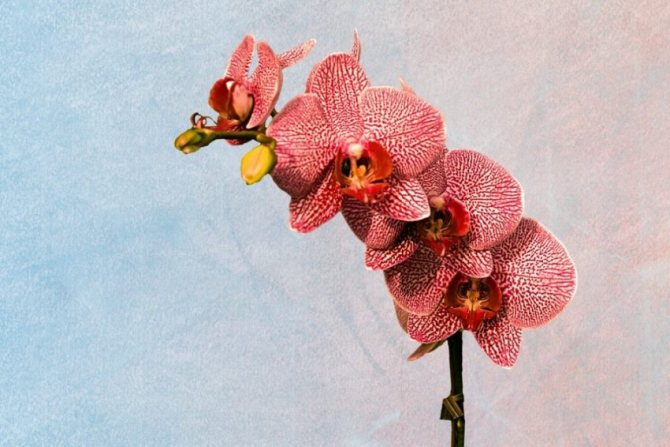

Do not forget that flowering is a result that requires conditions to help it as much as possible. As a result, you can get up to six months of constantly flowering orchids.
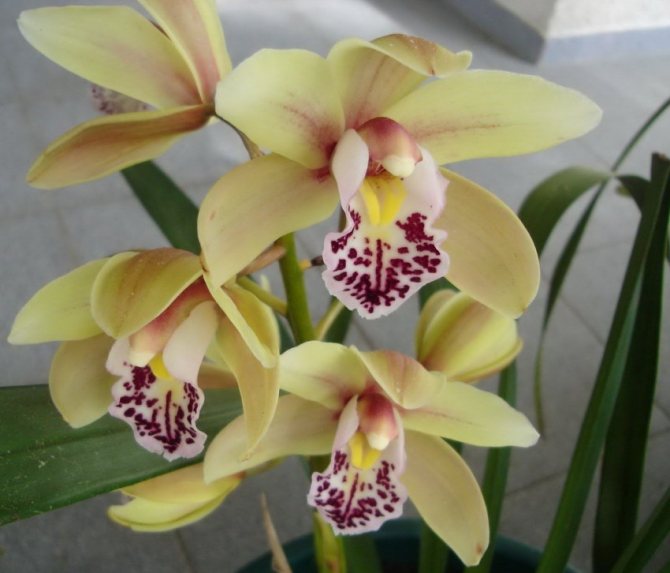

Moreover, the most popular orchid hybrids on the wound, phalaenopsis and wanda, with proper care, will bloom throughout the year.
Frequency and duration
The orchid blooms for the first time at 2-4 years of age, seedlings at 4-5 years. The number of formed leaves for the release of the peduncle is 5-8 pieces. The time during which an orchid blooms depends on the type of plant, growing conditions and care.
Usually the plant blooms once a year, for a while from several weeks to 3, 5, sometimes 8 months... In natural conditions, flowering occurs during the dry summer season. In the northern hemisphere, this period corresponds to winter. In its natural environment, when the plant has bloomed, the wind carries the seeds up to a distance of several kilometers.
One peduncle, if not cut off, can bloom again. During this period, the orchid is heavily watered, top dressing is used: succinic acid, vitamins in capsules, fertilizers purchased and prepared at home.
The orchid at home is capable of flowering until it reaches the age of 10 years. Some varieties stop blooming as early as 3 years old. With improper care, the term is reduced, with optimal, close to natural conditions, it increases. One flower blooms for 3-4 weeks. Full disclosure occurs within 24 hours.
Flowering period depending on the type of orchid:
- Cymbidium... October - February (in some sources - March), or from March to September. The peduncle is tied to the props, watering is reduced, fertilizers are excluded. Favorable temperature: 16-180C.
- Miltonia ("Butterfly Wings", "Pansies"), Miltassia... Bloom from March to June. The duration is 5-6 weeks. The temperature during the flowering period should be 18-220C.
- Dendrobium, Cymbidium... They bloom from early October to January (in some sources - until the end of winter), sometimes in summer. Flowers - white, white-pink, crimson, lilac with a yellow heart, lilac. To stimulate flowering, the plant is placed in a bright, cool place, watering is stopped.
- Oncidium blooms from April to July. Sometimes again - at the end of autumn, with a frequency of 1 time every 8-12 months. Maybe more often, as the shoots develop.
- Paphiopedillum ("Slippers", "Lady's Slipper"). The flowering period is from October to March. The rest period is not pronounced. Good lighting and adequate watering is ensured throughout the year. In nature, this species is adapted to a lack of light (while Paphiopedilla is not shade-loving!) And high soil moisture.
- Odontoglossum... Flowering - late winter - early summer, within 2-3 months.
- Zygopetalum blooms from November to February, once or twice a year. Flowers of green, brown, white and purple shades with specks and strokes.
Other conditions on which the period and duration of flowering depends:
- lighting,
- humidity,
- temperature.
The plant is transplanted every two to three years. Transfer signals:
- There is little room for air roots in the flowerpot, they are located very close to each other. Perhaps they began to rot (due to too strong soil compaction).
- Leaves, buds, flowers turn yellow and wither. It occurs due to insufficient nutrition of the orchid through the roots with a dense substrate.
- Insects in the soil. The plant is taken out of the pot, the roots are washed in warm water, the flowerpot and soil are changed.
- Viral, bacterial, fungal diseases. The roots are washed, the diseased parts are cut off, the cuts are sprinkled with coal, cinnamon, and treated with hydrogen peroxide. The pot and soil are changed.
After that, the orchid needs time to adapt, which takes up to 3 years. During this period, the plant does not bloom.
Phalaenopsis
Flowering duration - from 2 to 8 months, beginning - in December (in some sources - in January). It blooms up to three times a year. 2-40 inflorescences of snow-white, dark scarlet, yellow and red shades are formed. Sometimes the color is blue. Flowers last up to 4 months.
Long bloom does not always have a positive effect on Phalaenopsis. Young and old plants that bloom for more than 3 months will use up all their strength, which will lead to the death of the orchid. The same applies to recently recovered, transplanted plants.
So, in order to interrupt the unwanted prolonged flowering, the peduncle is carefully cut off. The cut site is treated with cinnamon, coal or hydrogen peroxide. The plant is not watered for 2 days. The dried stump is covered with wax to prevent bacteria and decay. Fertilizing is added to maintain the strength of the orchid.
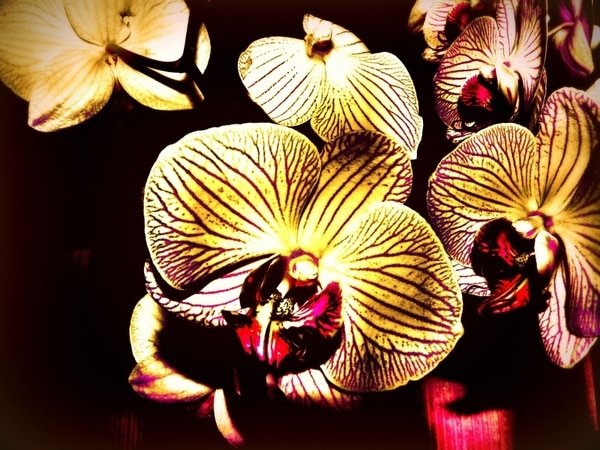

Unlike Cattleya, Phalaenopsis has no pseudobulbs and rhizomes, but there are many aerial roots. The light is necessarily diffused (for Cattleya, more light is required, including direct sunlight in the morning and evening time - in summer, throughout the day - in cloudy weather and in winter).
To lay the buds of the peduncle, a rest period is organized for one to two months. The temperature should be 160C. When buds appear, make sure that the temperature does not drop below 160C. If there is not enough light or the temperature is low, the buds fall off.
The correct light and temperature can be ensured by rearranging the Phalaenopsis to the balcony or loggia in the summer. The plant must be shaded from aggressive sunlight.
Important! The orchid can die in direct sunlight and in a draft.
A rest period is required for Phalaenopsis. The plant is resting and gaining strength for the next flowering.
Interesting! The end of the dormant period is determined by the color of the root system. Uniform coloration means that the plant is dormant, green tips signal that the orchid is growing. Watering during this period is increased.
Cattleya
The flowering period is mid-spring - early winter, throughout the year. Duration - 4 weeks. If the number of pseudobulbs in an orchid is 3 or more, then it blooms once every 8 months, with a dormant period. The development of a peduncle from a bud can take up to 4 months. The buds open sequentially. When the Cattleya orchid has faded, a dormant period begins. Reduce the intensity of watering, stop feeding.
For Cattleya, the following conditions are necessary for normal growth, development and, of course, flowering:
- The difference between day and night temperatures is 5-70C. In summer 22-280C during the day and 170C at night. In winter 16-180C during the day and at least 120C at night. In the morning and evening, the plants are placed in the sun for several hours. Be careful: too aggressive sun will cause burns.
- In the warm season, a pot of Cattleya is placed in a tray with water or damp pebbles. Water is used soft (settled, filtered or thawed), slightly warm or at room temperature. The immersion time is 10 minutes. This will allow the release of many new aerial roots.
- Water the substrate directly, avoiding water getting on the leaves and flowers of the plant. If a few drops get on the leaves or in the sinuses, dry with a napkin. Otherwise, brown spots will form in the places where the liquid enters.
- The orchid is fed, alternating with watering: watering - watering + top dressing - watering until a cover forms at the base of the leaf. Then they stop fertilizing and start again when the bud appears.
Conventionally, Cattleya orchids are divided into two groups: blooming in spring and autumn. For autumn, the stimulation of the release of the peduncle will be a reduction in daylight hours. For spring, on the contrary, its increase.
Possible problems and helpful tips for solving:
- The peduncle dries up. Insufficient watering, lighting or feeding.
- Leaves and pseudobulbs turned yellowish - too much light. If the leaves are saturated dark green, there is not enough lighting.


Cattleya Orchid
Cattleya, like other types and varieties of orchids, is susceptible to diseases, attacks of parasites. The plant is periodically examined, paying attention to the back of the leaves, stems, and substrate. When signs of pests appear, yellowing (blackening) of the roots, falling leaves, buds and flowers, measures are taken, otherwise the plant will die. A diseased orchid must be isolated from other indoor plants.
How do you find out her age?
It is impossible to determine the exact age of a flower, but it is quite possible to find out how young or old it is. Particular attention should be paid to this before purchasing a plant (find out how to choose the right orchid when buying here).
- If the purchased orchid does not bloom, it is likely that it is still too small for this - it usually begins to bloom at the age of one and a half years, but sometimes the ripening period is delayed for 3 years.
- Also, a short trunk will testify to youth. The flower has not yet had time to increase its length. The same can be said about the leaves - they are short in a young plant and their number is small (about four leaves grow in a year). The exception is orchids overfed with fertilizers.
- Another sign of an old flower will be stumps and remnants of cut branches - this suggests that it has already bloomed and, probably, more than once.
General information
Orchids are the most numerous and very ancient plant family. Most of its representatives are perennial grasses of various sizes and types. Among them there are very small ones, only a couple of centimeters in height, and there are those that reach 35 m in height. All of them are divided into two groups: terrestrial and epiphytic. Terrestrial ones live on the ground, large stones and rocks, and epiphytic ones prefer to be located much higher in order to get maximum light, and at the same time to protect themselves from herbivores. They hold onto the bark of trees with their roots, but at the same time they do not parasitize on trees; they receive food from the surrounding air.
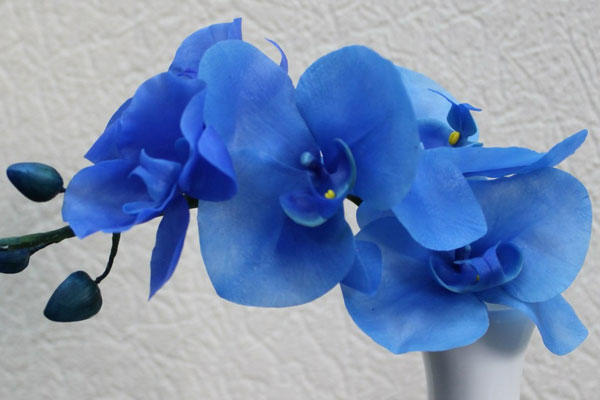

Orchids are surprisingly adaptable, they are common on all continents, except for ice, there are even species growing in the Russian expanses. But at home we grow tropical species of these plants, which attract us with their stunning flowers.
The stem of an orchid is necessarily green, it can be so short that it will hide under a rosette of leaves, or it can be very long, stand straight or curl, holding aerial roots, leaves and flowers on itself. Leaves are usually thick and fleshy; each plant may have many, or only one. Orchid roots perform several functions at once, they hold the plant on a substrate, stone or tree bark, receive nutrients from air and water, feeding the entire plant, but at the same time they also participate in the process of photosynthesis along with other green parts of the body.
The most attractive part of these plants is of course the flowers. They are surprisingly diverse, and insect-pollinated plants are amazingly ingenious to attract insects to their flowers. They find few bright colors and pleasant aromas (the tropics after all), so they construct special "shoes" for pollen, sticky legs and imitation of smells that bees will accurately react to with pollen firing systems. All this is done for fertilization, so that the fetus is set. Each fruit, and this is a dry box, contains up to 4 million seeds - this is an undoubted record among all flowering plants. This is how orchids have learned to survive over the millions of years of their existence.


In their homeland, many species are distinguished by longevity, individual specimens live up to a hundred years, foreign conditions do not suit them so well, but there are cases when an orchid grows in a greenhouse for 70 years.
What does it depend on?
There are several versions on this score, and therefore it is worth considering each of them in more detail.
From the type and variety
Sympoidal orchids easily give children, but monopoidal ones are not predisposed to such reproduction. Varieties such as Wanda, Phalaenopsis cannot be pollinated at home, which means they cannot collect seeds for reproduction, and babies from sleeping buds in a pot do not appear without human help.
Now orchids at home are represented mainly by hybrids obtained by breeders. Such breeding affects life expectancy in the most unpredictable way, even if they belong to the same variety - one flower can live for tens of years, and the other will die in five.
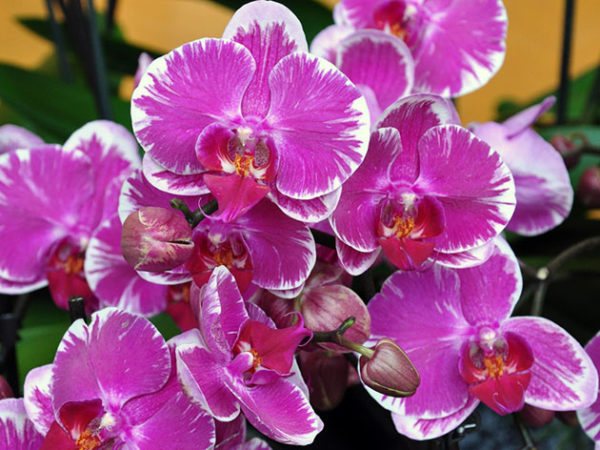

Find out more about the types of orchids in a separate article, and you can read about which varieties of flowers are unusual here.
Transfer
For a long and good life, any exotic flower requires certain conditions. Orchids need to be transplanted at least once every 2-3 years, but at the same time it is dangerous for the flower. It is very easy to damage the roots or leaves, to which the plant reacts extremely negatively, up to death.
But keeping it in one substrate for five years is also harmful, because the organic elements of the soil need to be updated - they rot and lose their useful properties. Orchids need a constant supply of nitrogen, potassium and other substances for full growth and flowering, therefore, transplantation must be carried out even despite the danger of damage.
Top dressing
All the necessary trace elements must be strictly dosed, otherwise it will certainly affect the health of the flower. It should be understood that the orchid needs at least a year before the first flowering - during this period it is actively fertilized.
In stores, plants are often fed with growth and flowering stimulants, because home buds differ greatly in brightness and quantity and even in size. But this method of getting beautiful and bright inflorescences is harmful to the plant, because this is one of several reasons why even a young and healthy plant will die earlier than it should.
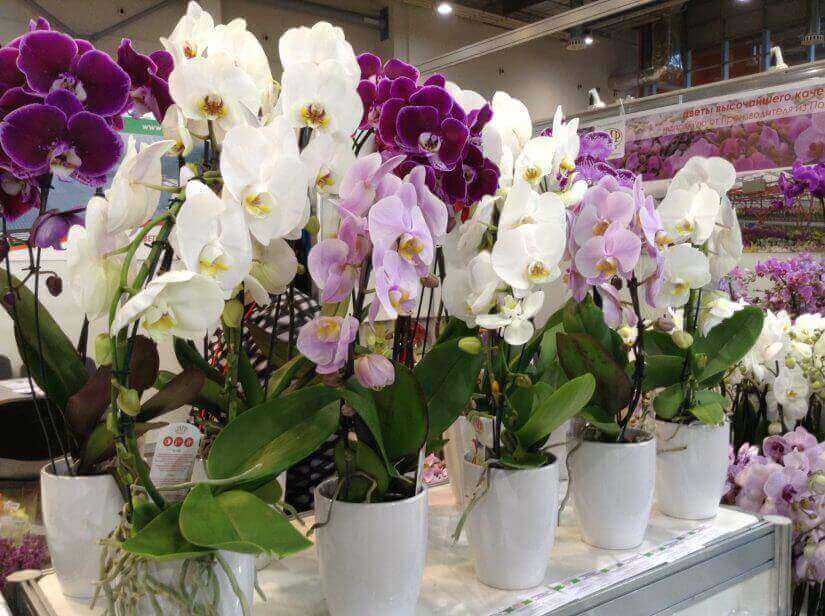

ATTENTION! An orchid with three to four peduncles is the result of oversaturation with phosphorus. This state is unnatural for a flower.
There are specimens with a lot of greenery. Long. fleshy leaves grow one after another, become dark - this is the result of oversaturation with nitrogen. To prolong the life of the plant. you should approach the issue of feeding wisely.
Growth stimulation
If the plant does not bloom for a long time, the following actions can be taken:
- Reduce watering by 2 weeks;
- Reduce temperature to 16 ° C.
After that, a peduncle appears from the sleeping bud. They also use ready-made liquids - growth stimulants, spray them according to the instructions.
If the orchid refuses to please its mistress for a long time, and all the necessary conditions have already been met, experienced gardeners use little tricks. If the plant was purchased in a store not flowering, then before stressing it, you should check its age and wait 1-2 months. Perhaps his strike is due to the fact that recently it worked for a store, and now it is resting, and it has a period of rest.
A little stress on an orchid can be done in several ways: move it to a cooler place or significantly reduce watering. Both methods should not be immediately applied, although it is even recommended to apply this to some other home peduncles, not so capricious. Judging by the experience of some, even for not the most advanced phalaenopsis lovers, this almost always works.
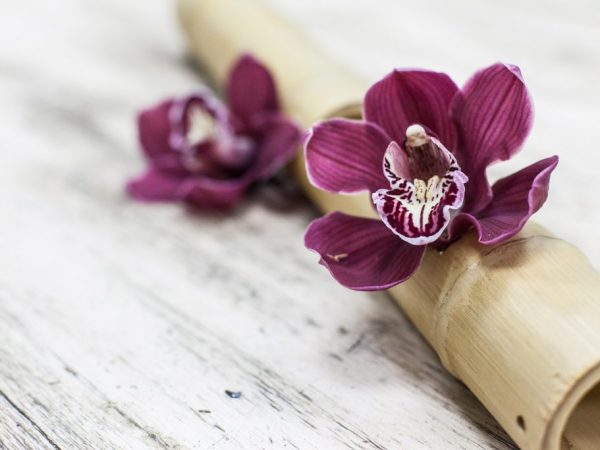

If not, then you should feed the stubborn plant with fertilizer for flowering a little and think about which of the conditions is still not met. Phalaenopsis is able to bloom without interruption for up to 1.5 years, releasing one peduncle after another, but if the stars begin to shrink and the leg is shortened, then it is better to give the plant the opportunity to stay a little at rest.
The ideal number of active periods for an average plant is once a year, but the duration of this beauty already depends on the abundance of watering and a sufficiently warm night temperature. The difference between day and night temperatures must be greatly reduced. Psychopsis and revolving shoes also belong to the long and profusely blooming ones, so they are the most frequent guests in home collections.
If, if all the conditions are met, orchids do not bloom for a long time, then experts recommend using methods to activate the vitality of the plant - to arrange a "stressful situation" for it.
It is considered the most universal technique, suitable for the overwhelming majority of varieties, often leads to a positive result - the culture does indeed form a peduncle.
Within 2 weeks, you need to take the flower out at night on the balcony, in the yard, if the ambient temperature has stabilized at night and keeps within 16 ° C. In the afternoon, bring it back into the room.
Arid way
Within 1-2 months, double the time interval between watering, do not spray, do not fertilize. After the first signs of the appearance of a peduncle, it is imperative to return to the previous plant care regimen.
Hot shower
Plant revitalization procedure:
- water the flower in the usual way;
- after half an hour, pour hot tap water on the orchid in the bathroom for 1 minute (no more);
- do not water or spray after a shower for another 2 weeks.
With fertilizers
Provide fertilizing with fertilizers in which the content of phosphorus and potassium prevails, and to a lesser extent nitrogen. Add the addition every second watering.
How does it start to open up?
In the axils, between the leaves, on the stem of the plant, there are dormant buds, which, under conditions close to natural (with normal care), can develop to a peduncle or give lateral shoots. Sometimes inexperienced growers confuse peduncles with aerial roots.
It should be remembered that the flowering arrow always develops from the point of growth... The peduncle can bizarrely bend at the beginning, and then stretch out, and quite high. At the top of the flowering arrow, bulbs are formed, which later open up into beautiful delicate buds.
Important! During the formation of the peduncle, in no case should the Orchid be exposed to stress.
In the case of the simultaneous appearance of a peduncle and a new leaf, it is best not to interfere and let the plant independently choose what is best for it to develop.
Peduncle pruning: pros and cons
The opinions of flower growers were divided: some recommend necessarily to cut the peduncle after flowering, others are categorically against it. It all depends on the type of orchid and the specific situation. For example, in Phalaenopsis, it is recommended to cut the peduncle immediately after flowering. But there is an exception here too. If the arrow remains green, new buds will appear on it. When the part of the peduncle dries, only this part is cut off.
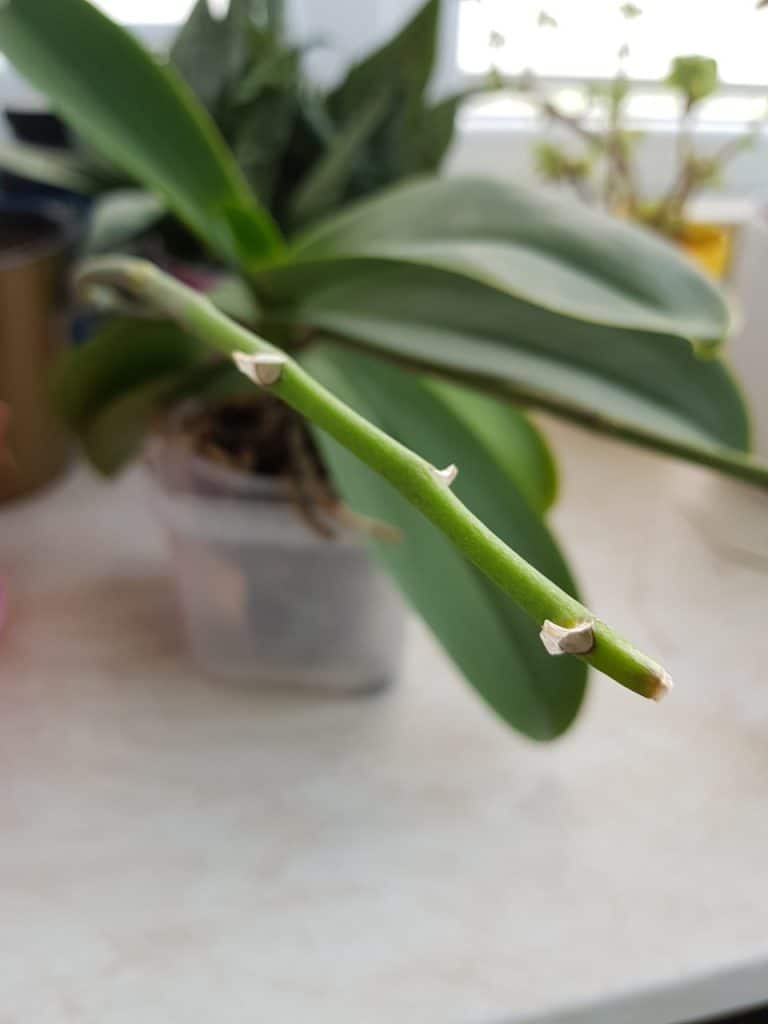

In Cattleya, the peduncle is left until it dries completely. The orchid takes nutrients from the frog, and pruning it is not just undesirable, but also harmful to the plant.
Arguments "vs»:
- On the dried peduncle, buds form, which bloom again.
- Improper pruning, use of blunt and non-sterile instruments cause infectious diseases of the plant.
Arguments "per»:
- Repeated flowering after a short time can destroy the plant, which does not have time to recover.
- The shoot of the peduncle (especially the dried one) looks ugly, not aesthetically pleasing.
Orchid lovers decide for themselves whether or not to cut the peduncle. The plant will not be damaged by any of the options.
The orchid does not shoot an arrow. Why doesn't the plant release the arrow?
Important. The reasons due to which there are problems with the peduncle depend on what type of orchid we are talking about.Without knowing the peculiarities of caring for a particular orchid variety, one cannot hope for its systematic, abundant flowering!
All orchids are divided into sympoidal and monopoidal. The latter have only one point of growth, the bush does not divide, it does not have a dormant period: Wandas, Phalaenopsis, Ascocenda. Sympoids, on the other hand, need a period of rest, which should be properly ensured. In other words, what is good for phalaenopsis and dendrobium will not be relevant for wanda, cymbidium, cattleya.
Before expecting a stalk from an orchid, you need to familiarize yourself with the specialized literature on the creation of the necessary conditions for keeping a certain type of flower. And then it is necessary to analyze: why the orchid does not give a peduncle, whether the created conditions suit it, and if they are not suitable, then what should be done? If the epiphyte does not have enough light, the irrigation scheme is not adjusted, the correct temperature regime is not observed, the plant has been fed for a long time, then flowering is out of the question.
Some florists use special preparations such as cytokinin paste. It is a phytoharmonic, its main purpose is to awaken dormant buds, form shoots in the intended place, and accelerate the flowering of a plant. Another drug is succinic acid (4 tablets per 1 liter of water). A pot of orchid is placed in a solution of acid with water overnight. In order for the orchid to sprout a peduncle, it is not enough to do this once - a similar procedure should be carried out at least once a week.

